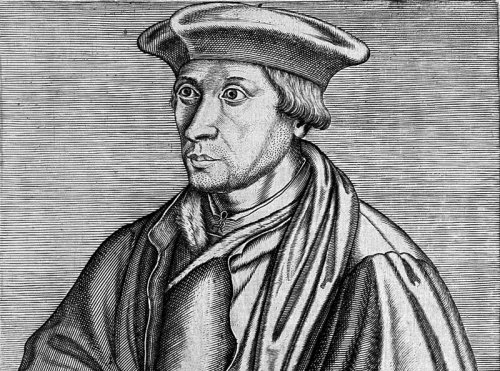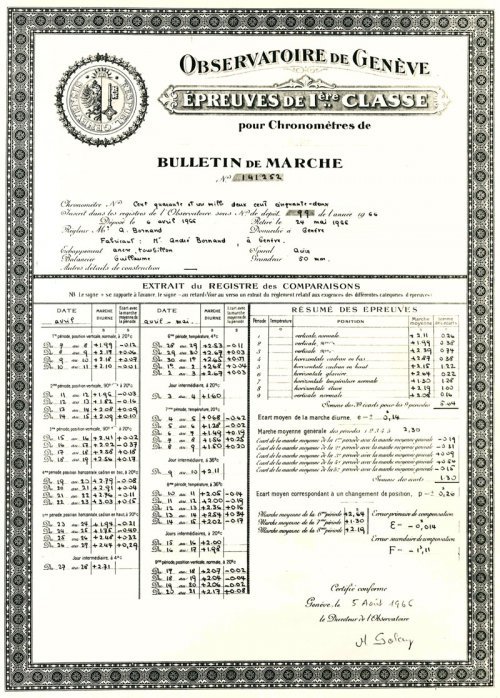Famous "chronometer individuals"
Oronce Fine 1494 - 1555

French mathematician, cartographer and astronomer. Former full member of the mathematic chair of the Royal College (current “Collège de France”), founded in 1530. Teacher from 1532 until his death, he contributed to popularize the traditional mathematics and geocentric astronomy from Ptolemy’s model. He invented different mathematic and astronomic tools and devices, such as sundials with dedicated treaties.
Isaac Habrecht 1544 - 1620

Watchmaker from Strasbourg, Swiss native, he belongs to a watchmaker’s dynasty (more than twenty) from Joachim de Schaffhausen (Swiss) on 16th century to Abraham IV (Strasbourg) on 18th century. He was committed with his brother Josias, by Conrad Dasypodius, to build the second astronomic clock for the cathedral of Strasbourg opened in 1574. He also realized the astronomic clock of Heilbronn city hall (Germany, 1580), the astronomic clock of Ulm city hall (Germany, 1581) and also indoor ones such as the astronomic clocks maintained in the British Museum (London) and in the Rosenborg castle (near Coppenhague).
Jost Bürgi 1552 - 1632

Swiss watchmaker, astronomer and mathematician. He started as mechanical expert in the Margraviat from Hesse (Germany) in 1595 and became the watchmaker for the German emperor Rodolph II (Praha), from 1603 to 1622.
In Praha, he worked with the astronomer Johannes Kepler (disciple then successor of Tycho Brahé). During Jost Bürgi working stage, Kassel (Margraviate from Hesse) became one of the major European centres of astronomy activities. Tycho Brahé came to work there regularly before creating the Uraniborg observatory (Danish isle of Hveen).
He also built 6 globes including 4 for Guillaume IV Landgrave of Hesse. One of them, made in 1594, is both a civilian clock and a moving picture of the celestial globe automatically indicating the position of more than 1'000 stars. This clock is exhibited, since 1978, at the National Swiss museum in Zürich.
He was nterested by logarithms, a significant invention that improved astronomers’ calculation methods. Jost Bürgi is said to have drawn up a logarithm tablein the early 17th century (without any publication) before the ones from Napier (1614 and 1617).
Jost Bürgi is the watchmaker who first defined the second as a time unit.
The chronometer
The chronometer is a high accuracy watch. Its movement is tested by a neutral body, during several days within different positions at different temperatures. Each watch is a single watch, identified by a dedicated number both engraved on its movement and certificate.
Each movement is individually controlled following a specific testing protocol (depending of the movement type), during several consecutive days, within 5 different positions at 3 different temperatures.
Each movement is individually measured. Each chronometer watch sold is delivered with a certified movement.
The Adjustment
The adjustment theory
The accuracy of the daily rate of a watch depends on the watch positon and the ambient temperature. The quality of a watch is a combination between the choice made on the alloys of components, their appropriate design and conception and also on the care provided at all assembly steps. However, if the accuracy is highly depending of the quality of machining operations, the oscillator system features will be a major criteria that will improve the adjustment of the daily rate of the watch.
The balance wheel of a watch is the part the most sensitive to the temperature variations. To limit the effects on the daily rate of the watch, linked to temperature changes, watchmakers propose bi-steel balance wheel. The dilatation factor for each steel part of the balance wheel contribute to offset each other. Engineers need to calculate balance wheels for temperature range from 5°C to 35°C. Watchmakers are used to name "COMPENSATION" the art dedicated to reduce the daily rate variations due to temperature. The adjuster operator is in charge to fine tune the mean adjustment that will offer the most accurate daily rate for the watch.
Adjustment competitions

This is the highly regular rotation of the globe around its axis that create the day/night continuation. To help to organize and plan activities, the Human being subdivided days in little units (hours, minutes and seconds). The rotation of the globe is an astronomical fact, that until 1950 was used to determinate the hour. Astronomers were in charge to determine hour by observing stars ways at the meridian axis (north-south axis on a specific location). It was the best method to obtain an accurate pulse to wedge reference clocks.
The cover our society needs and organize its activities in deep more details, more and more accurate watches are required to provide a deep time flow. To read hour on his watch is considered as taking a measure. A watch is dedicated to measure the time flow, to produce regular oscillations, collect them and show its accumulation through the watch hands.
Watchmakers engaged to improve their products, have created different offices of control. In Switzerland, the B.O. (Swiss Official Control Office of the daily rate of Chronometers) and the C.T.M. (Technical Control Office of Watches) were appointed to ensure the quality of the national production. The chronometers observatories, previously dedicated to determine time, have been understandably involved to control watches. In Switzerland, 2 laboratories are able to provide this expertise: the Chronometer Observatory of Neuchâtel and the “Observatoire Chromométrique+” of Geneva. These both laboratories are the better placed to propose accurate and strict monitored chronometer testing panels. The optional criteria regarding control under the responsibility of a chronometer laboratory and the strict trials criteria applied lead the adjustment as a real and complete competition.
